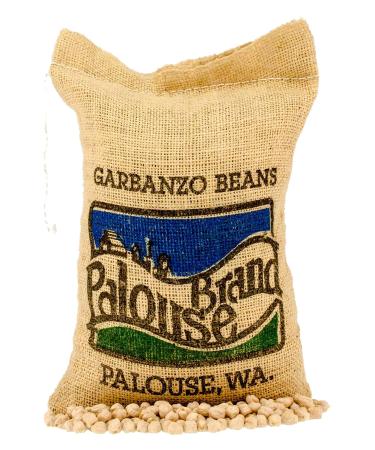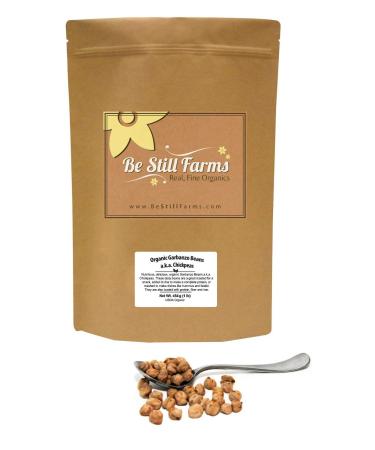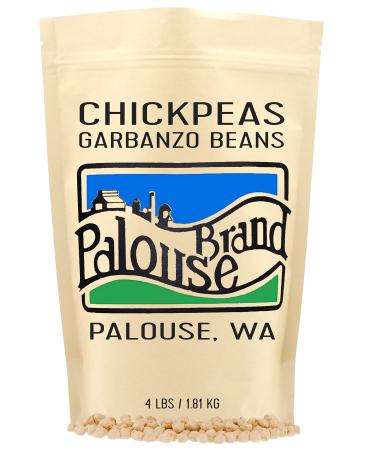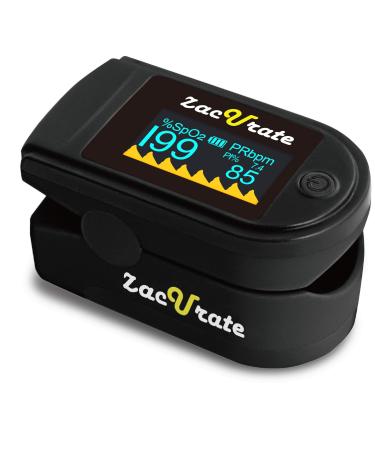Are Organic Garbanzo Beans Gluten-Free
All legumes are naturally gluten-free, so garbanzo beans are as well. In fact, organic garbanzo bean flour is one of the most popular substitutes for wheat flour. It's starchy enough to allow for quality baking and is much more nutritious. Therefore, you can enjoy it even if you aren't on a gluten-free diet. Garbanzo bean flour cookies and vegan raw cakes taste fantastic regardless of whether they are sweet or savory. Try making some spiced with garlic powder or sweetened with maple syrup and cinnamon. Are Organic Garbanzo Beans Paleo Organic garbanzo beans offer a variety of benefits to a healthy diet. They are very nutritious and taste great. However, no legumes fit the stringent guidelines of the Paleo diet because they are high in carbs. The most devoted practitioners of Paleo consume 100-150 grams of carbohydrate a day, or even less. Including legumes into your meal plan would be nearly impossible if that is your goal. In case carbohydrates aren't a concern for you personally, you can enjoy an occasional serving of organic garbanzo beans even on a Paleo diet. Be sure to soak them for at least 8 hours and cook thoroughly. This will make the legumes easier to digest. Garbanzo Beans for Dogs: Safety Considerations Organic garbanzo beans are one of the few legumes that are safe for dogs. However, you shouldn't give your pooch too much as they are high in calories. A handful of mashed beans mixed with food once every few days would be best. Note that you must never give your dog spiced garbanzo beans. Canned are allowed, but only after you rinse them thoroughly. These products contain a variety of ingredients that can be bad for your furry friend, so try to avoid them. Plain unsalted organic garbanzo beans would give your pooch quite a big nutritional boost. Some manufacturers even include them in grain-free dog food. However, make sure the beans are cooked through perfectly. They would be too hard for an animal's stomach to digest otherwise. Organic Garbanzo Beans: Nutritional Info Organic garbanzo beans nutrients are the main reason why this legume is considered one of the best. Vegans and vegetarians, in particular, should enjoy them frequently as chickpeas have a high content of iron. Every cup of cooked beans provides you with 26% of the recommended daily amount (4.7mg). However, a cup of cooked garbanzo beans also contains about 270 calories, so plan your meals carefully. About 50% of their nutritional value comes from dietary fiber (12g) and protein, so garbanzo beans are safe for a weight management diet. Other important nutrients you can get from a serving of this legume include:
- Folate
- Vitamin B6
- Thiamin
- Vitamin C
- Calcium
- Manganese
- Copper
- Zinc
- Potassium
Because a cup of cooked beans contains 14.5g of easily digestible plant protein, bodybuilders can add chickpeas to their diets. The advantage of this food is that it has very little fat, unlike meat protein sources.
Organic Sprouted Garbanzo Beans: Are They the Best Organic garbanzo beans, sprouted or not, are nutritious and very good for you. However, it's true that sprouting releases some chemicals 'locked' in the seed. This happens to help the tiny bean grow into a mature plant, and you can benefit from the nutrient extra boost. Sprouting also removes elements, which make the bean hard to digest. Like all legumes, garbanzo beans contain phytic acid and other chemicals designed by nature to protect the seed. Pre-soaking and sprouting destroys these elements and allows you to enjoy all the best garbanzo beans have to offer. If you prefer the extra nutrition that comes with sprouts, you might also consider making organic sprouted garbanzo bean flour. It's a lengthy process as you'll need to sprout the legumes first. Then, you'll have to dry them thoroughly using a dehydrator or an oven. When they are dry and cool, you can start grinding. Like whole beans, organic garbanzo bean flour is nutritious and good for you regardless of whether the seeds are sprouted or not. However, sprouts in every form have a much shorter shelf life, so don't store this flour for more than a month in the fridge. Up to 2 weeks is best.
How to Sprout Your Garbanzo Beans Organic garbanzo beans are easy to sprout. As they won't last long, think carefully about using more than half a cup of legumes. The length of sprouting (and resulting length of sprouted stalks) is optional. If you plan to use them in cooking, short-sprouted variety would be best. However, in salads and sandwiches, where you serve them fresh, longer plants will be better. They become juicier this way, which will also help make an exceptional raw garbanzo beans hummus.
- Wash the beans first to remove dust.
- Soak organic garbanzo beans (dried) overnight using 2 parts of water or more for a part of legumes.
- Put your garbanzo beans in a colander to drain (use stainless steel) and rinse them thoroughly.
- Leave them in that same colander to sprout. Put the thing over a bowl and cover with cheesecloth. This way, the air will move freely, but your garbanzo beans will be safe from flies and contamination.
- Rinse and drain the chickpeas several times a day (2-3 or more in hot weather) and keep them out of direct sunlight.
Using this method, Garbanzo beans should sprout in about 3 days. Let them grow for 5 if you want to get delicious, long sprouts. Rinse and drain your garbanzo bean sprouts once they are ready and let them air-dry thoroughly. Then, put in an airtight container and keep in the fridge for up to a week. If you are particular about not eating raw food, steam organic garbanzo bean sprouts for about 10 minutes. This won't affect the taste much, but will make the legume easier to digest.









![Stewart Freeze Dried Dog Treats Made in USA [Single Ingredient Puppy and Dog Training Treats - Grain Free Natural Dog Treats] Resealable Tub to Preserve Freshness](https://www.gosupps.com/media/catalog/product/cache/25/small_image/375x450/9df78eab33525d08d6e5fb8d27136e95/6/1/61gwbbixarl._ac_sl1500_.jpg)







